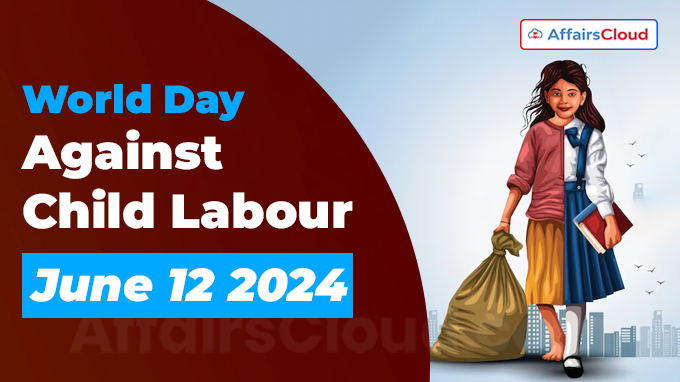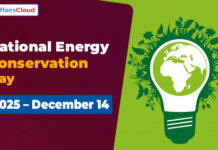 The United Nations (UN) World Day Against Child Labour is annually observed across the globe on 12th June to increase awareness about the need to focus on the global extent of child labour and the efforts needed to eliminate it.
The United Nations (UN) World Day Against Child Labour is annually observed across the globe on 12th June to increase awareness about the need to focus on the global extent of child labour and the efforts needed to eliminate it.
The 2024 theme of World Day Against Child Labour is “Let’s act on our commitments: End Child Labour!”.
2024 Observance:
The 2024 observance focus on celebrating the 25th anniversary of the adoption of the Worst Forms of Child Labour Convention, concerning the Prohibition and Immediate Action for the Elimination of the Worst Forms of Child Labour, adopted in 1990 as International Labour Organization (ILO) Convention No 182.
All 187 member States of ILO has ratified Convention No. 182
Background:
i.The World Day Against Child Labour was launched in 2002 by the ILO, the only tripartite United Nations (UN) agency, devoted to promoting social justice and internationally recognised human and labour rights.
ii.The first-ever World Day Against Child Labour was observed on 12 June 2002.
Call for Action:
World Day Against Child Labour on 12 June 2024 serves as a call to action for:
i.The effective implementation of the ILO Convention No. 182 on the Worst Forms of Child Labour;
ii.Strengthening national, regional, and international initiatives to end child labour in all of its forms by adopting national policies and addressing root causes as called upon in the 2022 Durban Call to Action;
Note:
i.The Durban Call to Action was adopted by delegates at the 5th Global Conference on the Elimination of Child Labour on 20 May 2022 in Durban, South Africa.
ii.It is a landmark document in which children are signatories, and it emphasises the need for urgent action to end child labour.
What is Child Labour?
i.Child labour refers to work that is mentally, physically, socially or morally dangerous and harmful to children.
ii.Child labour to be eliminated is a subset of children in employment. It includes all “unconditional” worst forms of child labour, such as slavery, prostitution, or illicit activities and work done by children below the legal age for that work type, as set by the national legislation by international standards.
iii.Around 218 million children worldwide are engaged in full-time work. More than half are subjected to the worst forms of child labour, including hazardous environments.
Key Points:
i.Africa ranks highest among regions both in the percentage of children in child labour (one-fifth) and the absolute number of children in child labour (72 million). Asia and the Pacific ranks 2nd highest in both these measures.
ii.The Africa and the Asia and the Pacific regions together account for almost 9 out of every 10 children in child labour worldwide.
Note: Child Labour (Prohibition & Regulation) Act, 1986 prohibits employment of children below the age of 14 years in 18 ccupations and 65 processes.
Global Commitment:
The Sustainable Development Goals (SDGs), adopted in 2015, include target 8.7, which calls for: Eradicating forced labour; Ending modern slavery and human trafficking; Prohibiting and eliminating the worst forms of child labour, including child soldier recruitment and Ending child labour in all forms by 2025.
Efforts to Combat Child Labour:
The ILO’s International Programme on the Elimination of Child Labour (IPEC) works towards the effective abolition of child labour. It was created in 1992 with the overall goal of the progressive elimination of child labour.
Supporting Children’s Rights through Education, the Arts and the Media (SCREAM) Program implemented by the ILO is a critical intervention aimed at withdrawing or preventing boys and girls from engaging in child labour and reintegrating them into the educational system
About International Labour Organization (ILO):
Director-General– Gilbert Fossoun Houngbo
Headquarters– Geneva, Switzerland
Founded in 1919




